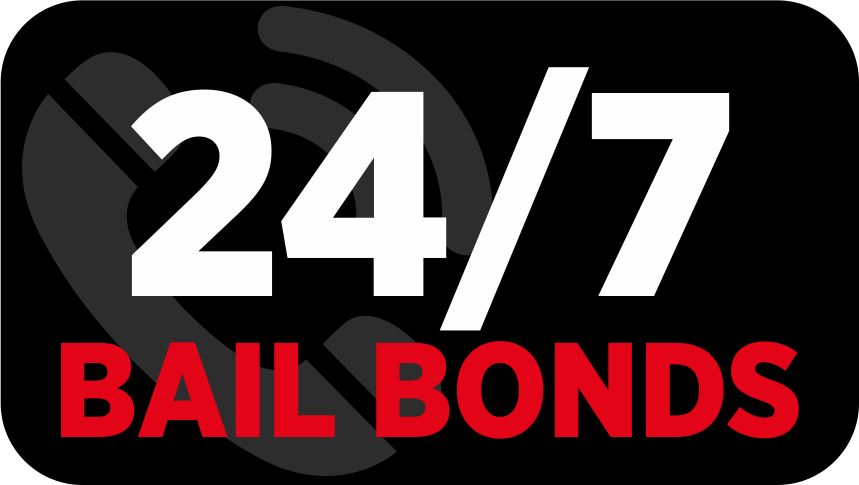Bail Bond Company Canton Ohio: Trusted Resident Bail Bondsmen for Quick Help
Bail Bond Company Canton Ohio: Trusted Resident Bail Bondsmen for Quick Help
Blog Article
Comprehending How a Bail Bond Functions and Its Effect on the Legal Process
The idea of a bail bond works as a vital system within the lawful process, enabling defendants a pathway to secure their launch while waiting for trial. By comprehending the ins and outs of this procedure, including the functions of bail bondsmen and the economic ramifications, one can appreciate how access to bail substantially affects lawful end results. Nonetheless, disparities in bail price raise pushing questions concerning systemic inequalities and their more comprehensive social impact. What effects develop when the ability to pay establishes one's freedom? Exploring these measurements reveals a complicated interaction deserving of further assessment.
What Is a Bail Bond?
A bail bond is a legitimately binding arrangement that works as an economic warranty for the release of an accused person from prison while they await test. This device enables defendants to protect their temporary freedom by giving a financial guarantee to the court that they will stand for all arranged hearings - stark county bail bonds. The bond amount is typically established by a judge based upon variables such as the seriousness of the crime, the offender's criminal history, and the danger of flight
bail bonds can be posted by the offender or with a Bail bondsman, who charges a non-refundable cost, generally a percentage of the complete bail quantity, in exchange for presuming the financial risk. If the defendant stops working to appear in court, the bail bond becomes surrendered, and the court might provide a warrant for the person's apprehension. In such cases, the bail bondsman is commonly tasked with nabbing the accused and locating to mitigate their economic loss.
Essentially, bail bonds serve an important function in the judicial system by balancing the presumption of virtue with the requirement to make sure court looks, thus facilitating the defendant's right to prepare for their situation beyond incarceration.

The bail Process Described
Browsing the bail procedure can usually really feel overwhelming for those strange with the legal system. The bail procedure normally starts after an individual is jailed and reserved. Now, a judge will identify the bail amount, which is intended to make sure the accused's look at future court days. Elements affecting this decision include the nature of the alleged criminal offense, the offender's criminal background, and their ties to the area.
Once the bail quantity is set, the offender or their representative can choose to pay the total in cash, schedule a bail bond, or demand a Bail hearing for a prospective reduction. If a bail bond is chosen, an accredited bail bondsman usually bills a non-refundable charge, generally around 10% of the complete bail amount, in exchange for guaranteeing the court that the accused will appear for all needed procedures.
Upon repayment, the bail bondsman will post the bail with the court, protecting the defendant's release. It is important for the defendant to comply with all court dates; failing to do so can result in the forfeiture of the bail and extra lawful consequences.
Kinds of bail Bonds
bail bonds come in various forms, each created to fulfill various demands and situations within the lawful structure. The most usual type is the surety bond, where a bondsman offers the full bail quantity for a fee, typically 10-15% of the total bail. This arrangement enables offenders to safeguard their launch without requiring to pay the pop over here entire bail upfront.
One more type is the money bond, which requires the offender or a 3rd party to pay the complete bail amount in money. This alternative is often favored for its simpleness, as the cash is returned upon the accused's court look, minus any kind of management fees.
Home bonds entail making use of real estate as security for bail. The building should be valued at or above the bail quantity, and if the offender falls short to appear in court, the court may confiscate the property.
Finally, there are federal bonds, made particularly for federal cases, which frequently carry various conditions. Recognizing these numerous kinds of bail bonds is critical for defendants and their family members as they navigate the intricacies of the legal system. Each type serves a distinct function, making certain a variety of options for securing launch from protection.

Function of bail Bonds in Lawful Results
Frequently ignored, the function of bail bonds considerably affects legal results for offenders. bail works as a device to make sure that people waiting for trial can stay devoid of imprisonment, therefore permitting them to participate much more successfully in their protection. The availability of bail bonds enables accuseds who may not have the monetary methods to upload bail straight to protect their release, which can lead to much more desirable legal outcomes.
When accuseds are out on bail, they have the possibility to gather evidence, speak with legal advise, and prepare their instance without the pressures of jail arrest. This raised accessibility to resources and assistance can cause enhanced possibilities of bargaining plea offers or obtaining a more lax sentence. The capacity to maintain work and family links while waiting for test can contribute to an extra positive understanding in court.

Ramifications for Defendants and Culture
The ramifications of the bail bond system prolong beyond specific accuseds, impacting culture as a whole. For many defendants, especially those from reduced socioeconomic backgrounds, the inability to pay for bail can bring about prolonged pretrial apprehension. This circumstance typically leads to task loss, interrupted household characteristics, and boosted likelihood of pleading guilty to internet lesser charges to secure launch, no matter actual sense of guilt.
Moreover, the social consequences are substantial (bail bonds canton ohio). A high reliance on bail bonds can continue inequalities in the justice system, as wealthier people can secure their liberty much more easily while poorer offenders stay incarcerated. This variation raises moral concerns about the justness of the lawful procedure and the broader ramifications for public depend on in the justice system
In addition, pretrial apprehension can intensify criminal behavior, contributing to higher regression rates and increased stress on area sources. The bail bond system, consequently, not only influences the prompt conditions of offenders however additionally has significant effects on social security and public safety. Addressing these implications is critical for producing a much more fair legal structure that safeguards both individual legal rights and the wider passions of culture.
Conclusion
Finally, recognizing the technicians of bail bonds is important for navigating the legal system successfully. The ability to safeguard short-lived release from incarceration with the settlement of a bond dramatically influences legal end results for defendants, enabling for much better preparation of their defense. The implications of bail bonds extend past private cases, disclosing systemic inequalities that affect communities and add to wider societal concerns, such as relapse and financial instability.
The concept of a bail bond offers as a crucial device within the legal process, permitting offenders a pathway to protect their release while waiting for trial. By comprehending the intricacies of this process, including the duties of bail bondsmen and the monetary effects, one can value how accessibility to bail considerably influences lawful results.bail bonds can be posted by the defendant or through a Bail bondsman, that bills a non-refundable cost, usually a percent of the overall bail amount, in exchange for assuming the monetary threat. The most typical type is the surety bond, where a Bail bondsman supplies the full bail quantity look at this now for a fee, commonly 10-15% of the overall bail. The availability of bail bonds makes it possible for offenders that might not have the economic means to post bail directly to protect their release, which can lead to much more desirable legal results.
Report this page